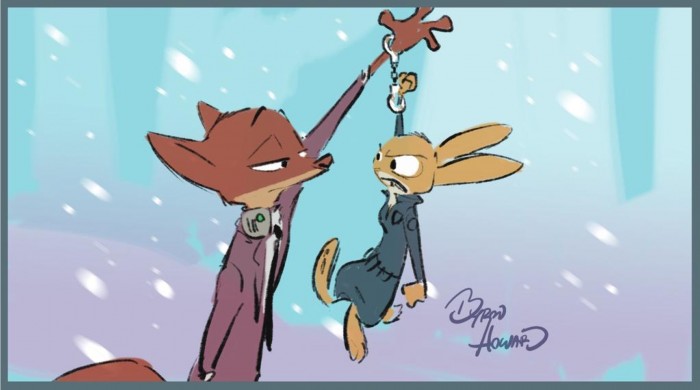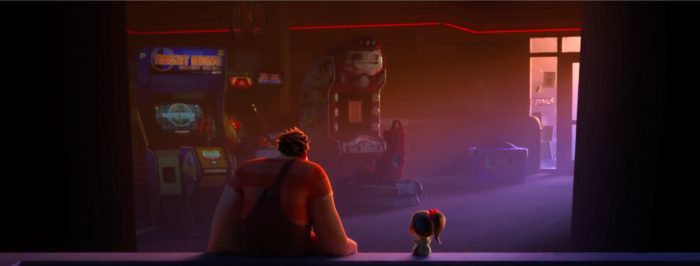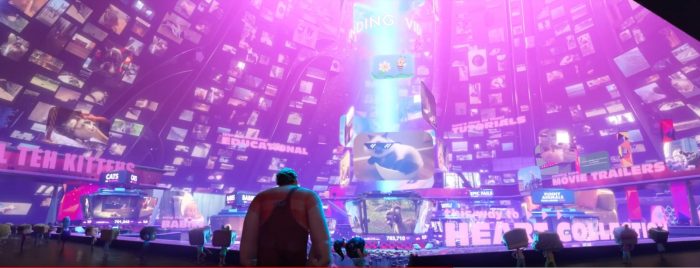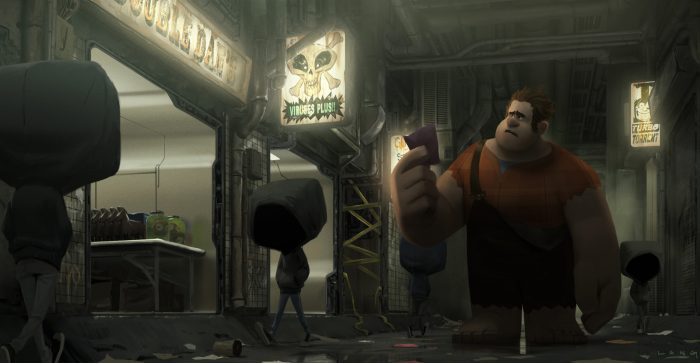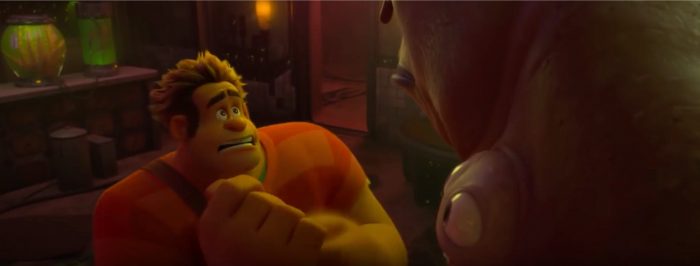'Ralph Breaks The Internet' Will Follow In The Footsteps Of 'Zootopia' And Tackle Social Issues
The idea for Ralph Breaks the Internet came shortly after making the first film. Directors Phil Johnston and Rich Moore wanted to revisit this world and these characters, but was there a reason be to make a sequel since the first film wrapped up so nicely? Also remember, Walt Disney Animation Studios doesn't make many theatrically released sequels. This is the 57th theatrical feature from Disney Animation and only the second intended theatrical sequel in the company's history (following Fantasia 2000 and to be followed by Frozen 2).
So in order to make a sequel, the idea had to be good enough to convince Disney brass to pull the trigger. Here's the story of how that idea came about and how the filmmakers behind Zootopia will be tackling another important issue in this sequel.
How Zootopia Changed Ralph
In 2014, Johnston and Moore were developing the earliest ideas for a Ralph sequel with a small team when a non-literal fire broke out elsewhere at the studio. Production on Zootopia was not going smoothly, and like a lot of animated films, the story wasn't working. However, what made this unusual was that it wasn't working so late into production. They were a little more than a year away from the film hitting theaters nationwide and Moore was part of the Disney story trust that director Byron Howard turned to for guidance:
"There came a point where like Byron said, that we're not liking Nick anymore," Rich told me at the Zootopia junket. "Now he seems sad. Now he seems so oppressed the Jason's not shining in it. And Ginnifer [Goodwin]'s character seems kind of ignorant. How could this bunny who's been raised in this method of collaring people, how do you care about her, she was like the Man. It's like she never questioned like, is this right? That half of our population wears collars. So there was a big moment kind of a come to Jesus moment of saying like I think we need to try a version without these collars."
The complete reworking of the film's plot would require Moore to put down his work on the Ralph sequel and co-direct Zootopia with Howard:
"And that's when John [Lasseter] asked me and this was in the fall of 2014. And we had about 16 months. In the film's life it was late. Because parts of it were already in production. So but John said, will you jump on board since you know the movie intimately? Will you jump on and you have a sense of what the task is? Will you jump on? ... I was [working on my own project]. And I said, absolutely, because that's what we do at the studio. That's if it's all hands on deck, we put down what we're doing and come to be to the service of the movie that's kind of next in the line."
Moore was pulled over to help save Zootopia and production on Wreck-It Ralph 2 was put on hold until he was able to return. And when he did return following the enormous success of Zootopia, it helped inspire the vision for the movie that became Ralph Breaks the Internet.
The Idea for the Sequel
The idea for the sequel came from a line in the first film. Ralph says "If that kid liked me, how bad can I be?" The line was originally intended to be nothing more than "very sweet sentiment," but as the filmmakers thought more about it, the concept of the sequel emerged.
They understood that it is a little dysfunctional that Ralph was defining himself based on how others think of him, and what would be the worst place for that type of person? The internet. Ralph's journey as a person is far from finished and as we'll find out in this sequel, the same is true of Vanellope.
Even though this is a Disney movie, don't expect the internet to be all candy-coated. Remember, these are the same filmmakers that tackled Zootopia in a bold, socially-conscious way. Director Rich Moore felt they had a responsibility to talk not just about the good, but also the more complicated parts of the internet.
Don't Read the Comments
While visiting Walt Disney Animation Studios, we were shown a number of clips from Ralph Breaks the Internet. In the film, Vanellope's arcade machine Sugar Rush is broken and Ralph and Vanellope need to go into the internet and earn the money to get the replacement part before her machine is thrown out. The big plan is for them to create a viral video that will earn the cash they need to buy the replacement steering wheel off eBay.
We saw one scene where Ralph, having just produced a popular viral video, walks into a room at BuzzTube surrounded by screens streaming up-to-the-minute social network comments. Ralph begins to get happy after reading a positive comment about him, but this is followed by a series of people saying negative and mean things about not just the video, but about him as a person. Yesss tries to comfort him, giving him age-old advice: "The first rule of the internet is to not read the comments." Ralph gets angry and upset, storming off saying that he doesn't need the internet.
Producer Clark Spencer says that the filmmakers were emboldened by the work on Zootopia which "told us audiences are okay and actually eager for a more sophisticated approach to family films to tricky subject matter." In Zootopia, it was racism. This time around, it's online bullying. Spencer explains:
"As you saw in that sequence but more to an emotional level with Ralph's self-doubt, insecurity and all those things that parents and kids can relate to. There are certain things that we're not dealing with, but we are dealing with those emotions that kids and parents feel when a stranger belittles you and how that makes you feel and how having a true friend and people who love and support you get you through that. Yesss' comment there, while it might sound reductive, is really the best advice: ignore it, don't feed the trolls and don't listen to them. And that's something a guy like Ralph who is very insecure, might have some trouble dealing with. And so hopefully talking about it and using a character like Ralph will help start a discussion between parents and kids."
The story department revealed that they initially tried a version of the comment room where a little troll wandered in and berated Ralph, speaking in all caps. The final finished scene was more subtle and much more effective. The idea for the scene developed over the last four years, as director Rich Moore says, "the internet has become more hostile." He elaborated:
"We couldn't make a movie about the internet and make it out to be all rays of sunshine. We approached it in the way that we approached racism in Zootopia. It would have been bad to have Judy Hopps solve racism, that's just not how the world works. But she can experience it, and she can practice it, and she can learn from it, and she can rise above it. That was our goal with this movie, that Ralph can encounter these things and embody them, fall prey to them, but ultimately not to solve it because I think that would be disingenuous of us. And the last thing we want to do is lecture the audience or preach to them, but we can show a character who encounters what we encounter on the internet and see how he goes about rising above."
We also know that the film will deal with the toxic world of online gaming. We have seen a glimpse of that in the second trailer for the film, released today, where Ralph and Vanellope enter the world of Slaughter Race, a dangerous game that looks like Grand Theft Auto on crack. We weren't even told about this world when we were visiting the studio last month so we were unable to talk to the filmmakers about the deeper aspects of it — but I'm sure it won't be as simple as it looks.
The Deep Web and the Darknet
The film will also explore the darkest areas of the internet. The world wide web consists of anything searchable online, but the internet doesn't stop there. In the movie, we will see the deep web, which contains archives, software, things behind paywalls, and the kind of stuff that isn't easily accessible in the browser. Depicted in the movie as a dark, underground collection, The Deep Web can be found below the city and it's home to all the discarded and unused stuff from the internet. For example, we see the Napster logo, Myspace, Netscape and a reference to Y2k amongst the junk. We also see the dial-up express, the old transportation system that could only move as fast as the loading bars.
In the movie, Ralph will have to journey through the Deep Web to get to the Darknet. Why? The filmmakers did not want to reveal that much. But we know to get there, Ralph takes an encrypted elevator underground to the Darknet, the seedy underbelly of the internet. Here, the users are all anonymous, and this is a place to meet a lot of tricksters and viruses. One thing is for sure, Ralph really should't be there.

